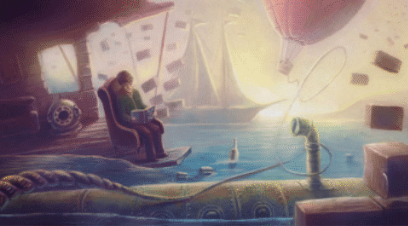JULES VERNE THE FATHER OF SCIENCE FICTION
ules Verne, who is considered to be the Father of Science Fiction, (Feb. 8, 1828 to March 24, 1905) wrote more than 70 books that inspired generations of readers — artists, inventors and scientists. He has also influenced the development of many modern technologies. In his 1865 novel, From the Earth to the Moon , Verne told the story of The Baltimore Gun Club’s attempts to launch three men to the moon with a powerful canon. He worked some rough calculations and some of his data came surprisingly close to reality. During their return journey from the moon in 1969, Neil Armstrong, mission commander of the Apollo 11, made reference to Jules Verne’s book. “A hundred years ago, Jules Verne wrote a book about a voyage to the Moon. His spaceship ... took off from Florida and landed in the Pacific Ocean after completing a trip to the Moon.” Apollo 11 also took off from Florida and landed in the Pacific Ocean. In other books, Verne predicted other ways to explore the frontiers and he also predicted some advanced technology: helicopters, holographic performances, video conferencing, the use of drones instead of soldiers, and many more. Verne had no formal scientific education. He surrounded himself with a circle of friends who were interested in science, inventions and exploration. He took many notes, for example, on a submarine that was being tested in the North Sea. These notes would help him shape the Nautilus, a submarine powered by electricity that appeared in Twenty Thousand Leagues under the Sea , published in 1870. Simon Lake, a mechanical engineer and naval architect who helped develop submarine design for the U.S. Navy, was inspired by Twenty Thousand Leagues under the Sea . Lake opened his autobiography with “Jules Verne was in a sense the director-general of my life.” Many other inventors and explorers credit their inspiration to Jules Verne.

